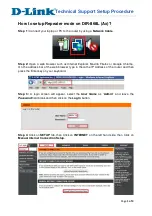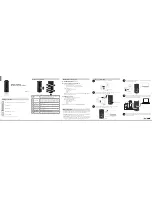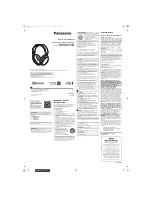
Assigning IP Addresses
2476_en_I
PHOENIX CONTACT
A-3
A 2.1
Special IP Addresses for Special Applications
Certain IP addresses are reserved for special functions. The following addresses should not
be used as standard IP addresses.
127.x.x.x Addresses
The class A network address “127” is reserved for a loopback function on all PCs,
regardless of the network class. This loopback function may only be used on networked
PCs for internal test purposes.
If a telegram is addressed to a PC with the value 127 in the first byte, the receiver
immediately sends the telegram back to the transmitter. In this way, it is possible to check,
for example, whether the TCP/IP software is correctly installed and configured.
As the first and second layers of the ISO/OSI reference model are not included in the test,
they should be tested separately using the ping function.
A 2.2
Value 255 in the Byte
Value 255 is defined as a broadcast address. The telegram is sent to all the PCs that are in
the same part of the network. Examples: 004.255.255.255, 198.2.7.255 or
255.255.255.255 (all the PCs in all the networks). If the network is divided into subnetworks,
the subnet masks must be observed during calculation, otherwise some devices may be
omitted.
0.x.x.x Addresses
Value 0 is the ID of the specific network. If the IP address starts with a zero, the receiver is
in the same network.
Example: 0.2.1.1 refers to device 2.1.1 in this network. The zero previously signified the
broadcast address. If older devices are used, unauthorized broadcast and complete
overload of the network (broadcast system) may occur when using the IP address 0.x.x.x.
A 2.3
Subnet Masks
Routers and gateways divide large networks into several subnetworks. The subnet mask is
used to assign the IP addresses of individual devices to specific subnetworks. The network
part of an IP address is not modified by the subnet mask. An extended IP address is
generated from the user address and subnet mask. Because the masked subnetwork is
only recognized by the local PC, this extended IP address appears as a standard IP address
to all the other devices.
Structure of the Subnet Mask
The subnet mask always contains the same number of bits as an IP address. The subnet
mask has the same number of bits (in the same position) set to “one”, which is reflected in
the IP address for the network class.
Example: A Class A IP address contains a 1-byte network address and a 3-byte PC
address. Therefore, the first byte of the subnet mask may only contain 1s (ones). The
remaining bits (three bytes) then contain the address of the subnetwork and the PC. The
extended IP address is created when the bits of the IP address and the bits of the subnet
mask are ANDed. Because the subnetwork is only recognized by local devices, the
corresponding IP address appears as a “normal” IP address to all the other devices.
RSPSupply - 1-888-532-2706 - www.RSPSupply.com
http://www.RSPSupply.com/p-12970-Phoenix-Contact-2900016-Radio-900-MHz-Ethernet-Radio.aspx














































